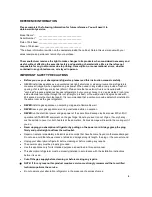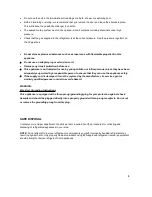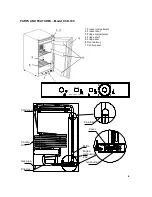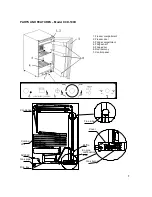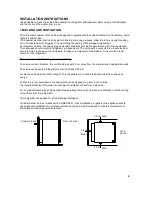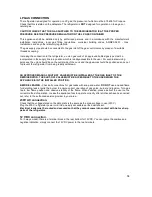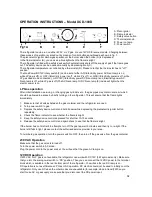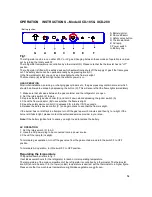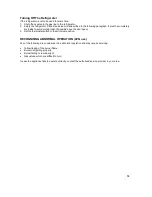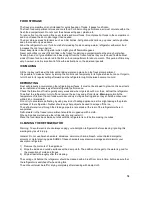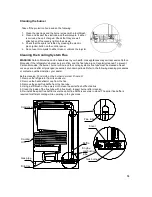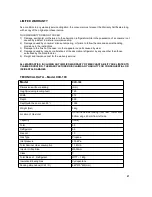
18
FOOD STORAGE
The freezer compartment is not intended for quick freezing of foods. It keeps food frozen.
The fresh food compartment stores and cools food. For best cooling performance, air must circulate within the
fresh food compartment. Do not cover the shelves with paper, plastic, etc.
To reduce frost on the cooling fins, cover liquids and moist foods. Do not place hot foods in the compartment,
and do not leave the door open longer than needed.
The door storage areas hold items such as 2-liter bottles, half-gallon milk cartons, pop cans, ketchup bottles,
and other commonly used items.
Allow the refrigerator to cool for 8 hours before loading foods. Loading a warm refrigerator with warm food
increases the cool down period.
Never keep items in the refrigerator which might give off flammable gases.
Never put bottles or cans of fizzy drinks in the frozen food storage compartment as they may burst when
freezing. Also don’t give children ice lollies straight from the frozen food as they could cause frostbite. Most
kinds of frozen food can be stored in the frozen food compartment for about a month. This period of time may
vary, however, and it is important to follow the instructions on the individual packets.
ICE-MAKING
Fill the ice tray just below the brim with drinking water and place it on the freezer compartment.
It is possible to make ice faster by turning the control knob temporarily to its highest value but do not forget to
turn it back to its regular setting afterwards as the refrigerator might otherwise become too cold.
DEFROSTING
Frost will gradually accumulate on the refrigerating surfaces. It must not be allowed to grow too thick as it acts
as an insulation and adversely affects refrigerator performance.
Check the formation of frost regularly every week and when it gets about 3 mm thick, defrost the refrigerator.
To defrost the refrigerator, turn it off and remove the ice tray and all food items.
Warning
: normally the
temperature of items of frozen foods would rise unduly during defrosting and so they should be consumed
within 24 h or discarded.
Do not try to accelerate defrosting by using any kind of heating appliance, as this might damage the plastic
surfaces of the refrigerator. Neither should any sharp objects be used to scrape off the ice.
The defrost water runs through the drainage pipe to a receptacle at the rear of the refrigerator where it
evaporates.
Defrost water in the freezer compartment should be mopped up with a cloth.
When all ice has melted, wipe the refrigerator dry and restart it.
Place the food items back inside but wait until the refrigerator is cold before making ice cubes
CLEANING THE REFRIGERATOR
Warning: To avoid electric shock always unplug your absorption refrigerator before cleaning. Ignoring this
warning may result in injury.
General: Do not use harsh chemicals, abrasives, ammonia, chlorine bleach, concentrated detergents,
solvents or metal scouring pads. SOME of these chemicals may dissolve, damage and/or discolor your
absorption refrigerator.
1) Remove the contents of the appliance
2) Wipe the inside and outside surfaces with a damp cloth. The addition of vinegar to the water is good for
the prevention of mold and fungus.
3) Wipe all parts thoroughly after the cleaning.
The cooling unit behind the refrigerator should be cleaned with a brush from time to time, but make sure that
the refrigerator is switched off when doing this.
The entire unit must be left for drying completely after cleaning with damp cloth

